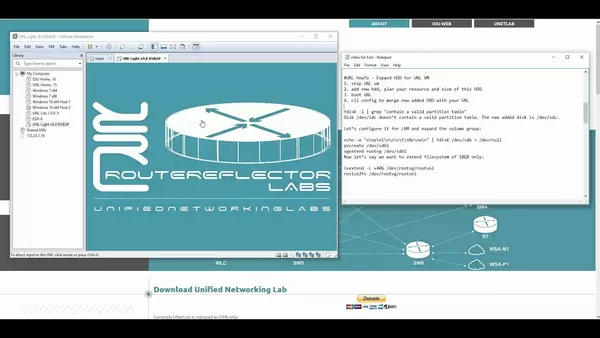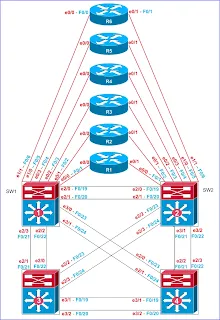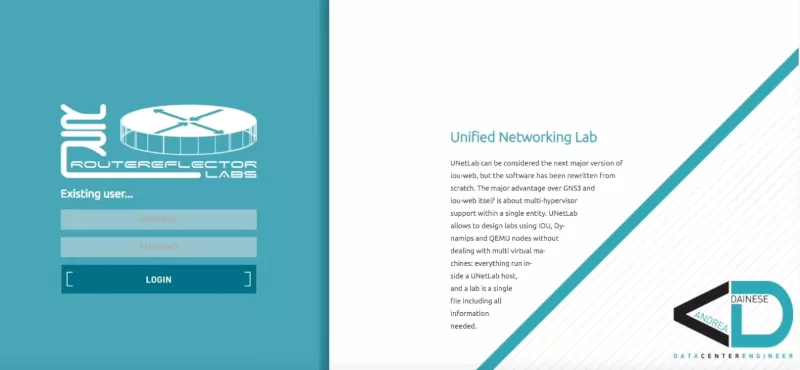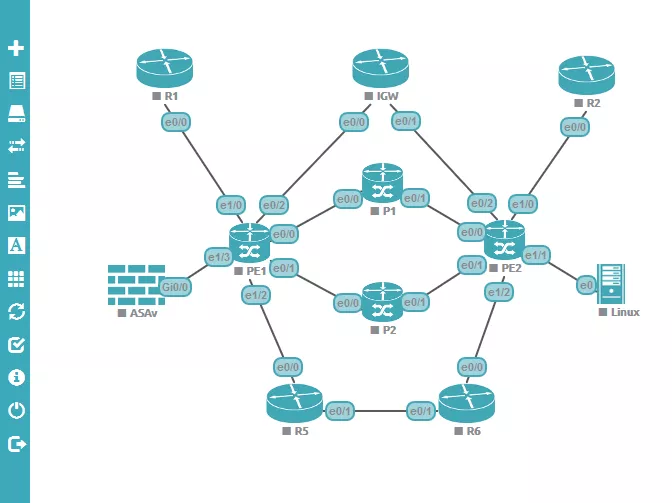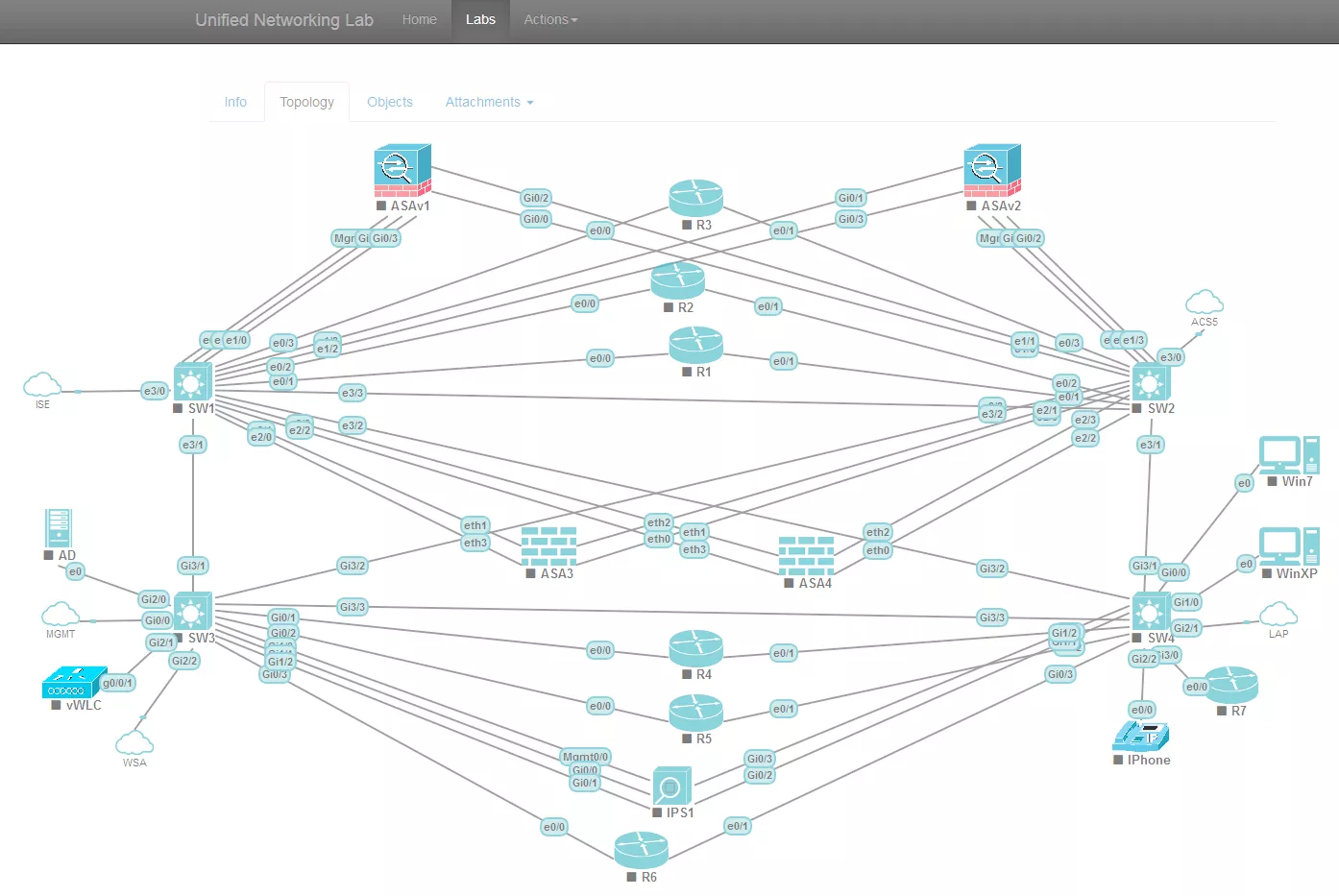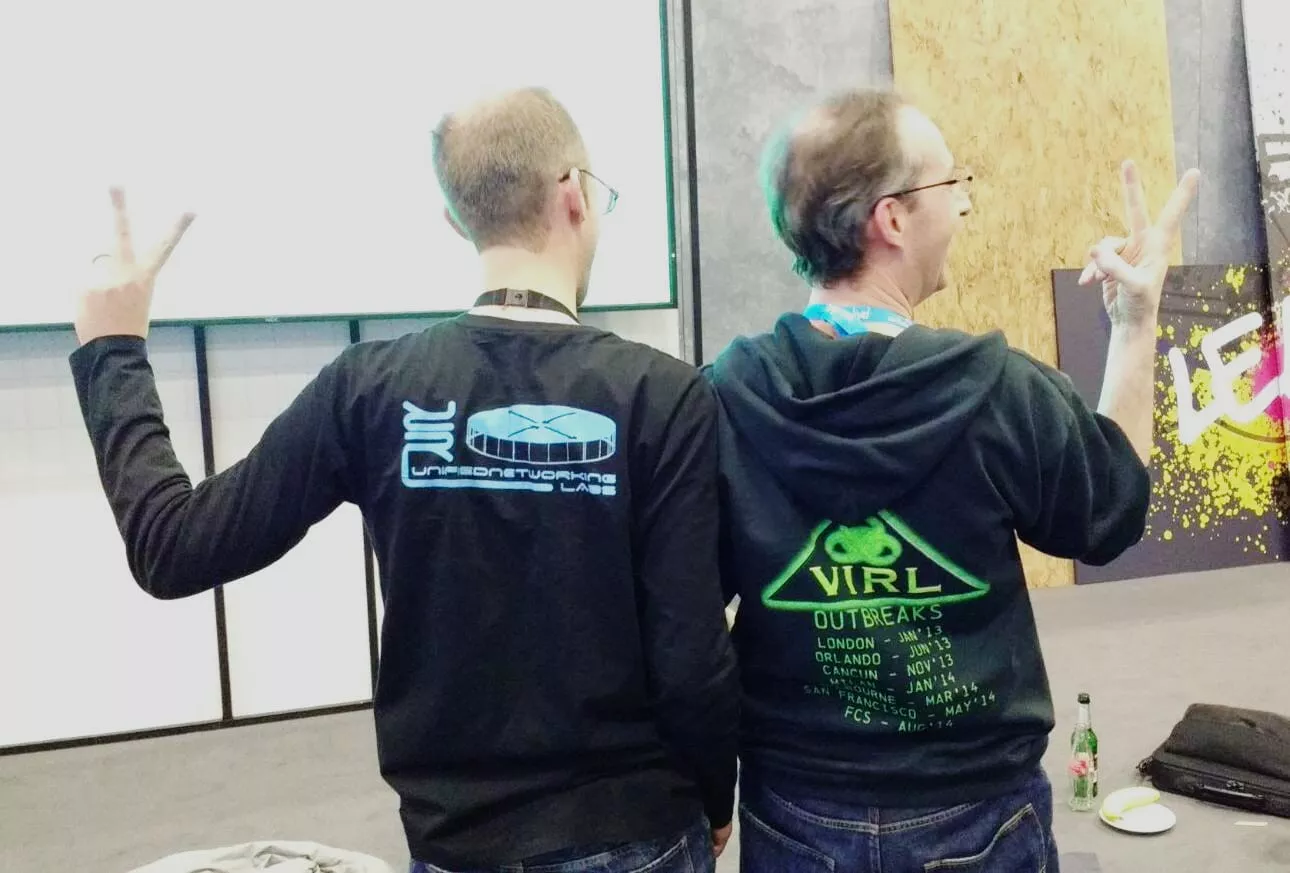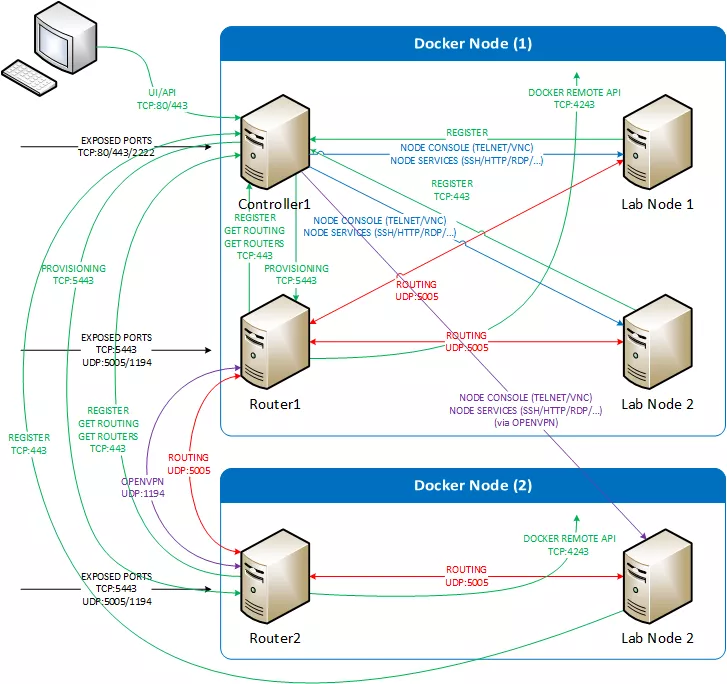Opt-out from Web Archive
April 29, 2024
Unified Networking Lab (UNetLab): the story
I develop network emulators since 2011, and, even if I’m not a programmer, I can say I did a good job, putting iou-web (at first) and UNetLab (at last) as a good competitor for GNS3 and VIRL without any budget.
If you’re looking for EVE-NG please follow the link .
Below you can read a summary of my software, and the architecture of the UNetLabv2.
UNetLabv2 has the same UNetLab features, plus:
- thousands of nodes for each lab;
- labs distributed between dozens of physical or virtual nodes;
- unlimited running labs for each user;
- support for Ansible/NAPALM/… automation tools
Previously on WebIOL/iou-web
At the end of 2011, I needed a tool to emulate networks. Prerequisites were:
- portability: labs must be exportable and importable;
- stability: running labs must be stable, avoiding crashes;
- performance: labs must be able to run into a cheap laptop or a VM.
GNS3 was the only available option, and it couldn’t satisfy all prerequisites. I decided to develop a new network emulation software based on IOL (IOS on Linux, by Cisco). I knew many Cisco guys, and I would love to be part of the Cisco family, sooner or later. In the meantime, I realized Cisco developed internally a similar software, called WebIOL.
WebIOL was developed in Perl and released for Cisco employers only. It contained some basic labs from Cisco 360 program.
After a couple of alpha versions, on January 23rd (2012) iou-web has been released to the public. iou-web (not webiou or web-iou) was developed in PHP and in a few months counted hundreds of users worldwide. If GNS3 supported real IOSes only (via Dynamips), iou-web-supported IOL only. But because IOL was faster than Dynamips, many users preferred iou-web.
UNL/UNetLab/EVE-NG
In 2013 I realized iou-web was too limited, I needed a “unified” way to emulate a network, including firewalls, load-balancers, and so on. Moreover, multicasting using IOL was bugged. I had more prerequisites:
- include vendor virtual appliances in labs;
- include real IOS in labs;
- include (possibly) emulators from different vendors;
- multi-user.
I entirely rewrote iou-web to make an extendable network emulator system. The idea was:
- each node (emulated device) must be attached to a common layer;
- a nice common layer could be an Ethernet Linux bridge (OVS was supported too).
On October 6th (2014) UNetLab has been released to the public. Developed in PHP using a REST API framework, and a single page application (jQuery). In a few months, I was able to count five to six hundreds daily users. I would name it UNL, but the website wasn’t free.
Initially, I had the idea to include Huawei eNSP, but because eNSP nodes expect a particular string, no one was able to run eNSP nodes outside eNSP.
In 2015 I didn’t have enough spare time for UNetLab, so a group of guys forked UNetLab and on January 5th (2017) EVE-NG has been released to the public, but that’s another story because I’m not part of EVE-NG team.
In 2014 I had an interesting chat with a guy from the Cisco VIRL team during CLEUR 2014 (Milan).
Why UNetLabv2
In the last two years, my focus moved to network automation, and now I still need a unified network emulator platform but the prerequisites changed. But before that, let me point out UNetLab limits:
- per host pod limit: currently each host can run up to 256 independent pods, because of the console port limit;
- per lab node limit: currently each pod/lab can run up to 128 - 1 nodes, because of the console port limit;
- per user pod limit: currently each user can run up to one pod/lab a time, because of the console port limit;
- one host only: currently there is no way to make a distributed installation of UNetLab (OVS could be used, but many frame types are filtered by default);
- config management: getting and putting startup-config is done through expect scripts, they are slow, non-predictive, and cannot cover all node types;
- Dynamips serial interfaces are not supported;
- no topology change is allowed while lab is running, by design.
The console port limit happen because each node console have a fixed console port, calculated as following: ts_port = 32768 + 128 * tenant_id + device_id. Moreover, no more than 512 IOL nodes can run inside the same lab because device_id must be unique for each tenant.
So UNetLab v2 must be able to:
- run a distributed lab (between local or geographically distributed nodes);
- run lab with a non-limited number of nodes;
- allow each user to customize a lab without affecting the original copy;
- link serial interfaces between IOL and Dynamips;
- configure nodes via Ansible/NAPALM/whatever.
I knew how to make a distributed network emulator, but I missed a bit: how to easily run nodes within a dedicated namespace? I got the answer from vrnetlab: using Docker.
Because of UNetLab limits, I preferred to rewrite UNetLab from scratch, again. Even if EVE-NG is a UNetLab fork, the EVE-NG team is working to overcome the limits described before.
UNetLabv2 Architecture
The architecture could seem a little bit complex, but that’s not true, in fact I was able to implement it by myself and in a relatively short time.
UNetLabv2 is based on:
- Docker: controller, routers and lab nodes run inside a Docker container;
- Python: no more C, PHP, or Bash, only Python 3;
- Python-Flask + NGINX implement and expose APIs;
- Memcached caches authentication for a better user experience;
- Celery + Redis manages asynchronous long tasks in the background;
- MariaDB stores all data/user and running labs;
- Git stores original labs with version control;
- jQuery + Bootstrap will implement the UI as a single page app;
- iptables + Linux bridge allow to connect to just started lab nodes via SSH;
- IOL, QEMU, and Dynamips run lab nodes.
A UNetLabv2 cluster must have at least one node: it could be a physical or a virtual system. Each UNetLabv2 node run Docker: the first UNetLabv2 node is the master one and it contains a controller and a router, every additional UNetLabv2 node contains a router only. Each UNetLabv2 node run also many lab nodes. Controller, routers, and lab nodes are Docker instances.
The controller container:
- exposes web UI and APIs to user clients, routers, and lab nodes;
- receive register requests from routers and lab nodes;
- provision and manages lab nodes via routers;
- contact lab nodes via Ansible/NAPALM/… via routers;
- provides routing table to routers;
- can be reached via SSH using port 2222.
The router containers:
- register against the controller;
- expose Docker Remote API;
- expose lab node API;
- get routers and routing table from the controller;
- route lab packets between nodes and routers;
- allow reachability between controller and remote lab nodes via OpenVPN.
The node containers:
- register against the controller;
- run the emulated node (IOL, Dynamips, or QEMU);
- bind a management interface of emulated notes to a local bridge;
- route and sNAT/dNAT packets to the management interface of the emulated node;
- route packets between the local router and the emulated node for the non-management interfaces;
- manage emulated links (up/down).
Because controller and routers know inside and outside IP addresses; users can deploy UNetLabv2 nodes wherever they want (in the same LAN, in AWS, Google Compute Engine, Azure, behind a firewall…). As the above diagram explains, each UNetLabv2 cluster needs the following ports:
- TCP:2222 to connect to the controller via SSH;
- TCP:80/443 for HTTP/HTTPS requests to the controller;
- TCP:5443 for HTTPS requests to the router;
- UDP:5005 for routed packets between different UNetLabv2 nodes;
- UDP:1194 for network reachability between the controller and remote lab nodes.
UNetLabv2 is discontinued and thus not available to the public. Don’t ask for it and go with GNS3 , VIRL or EVE-NG .















